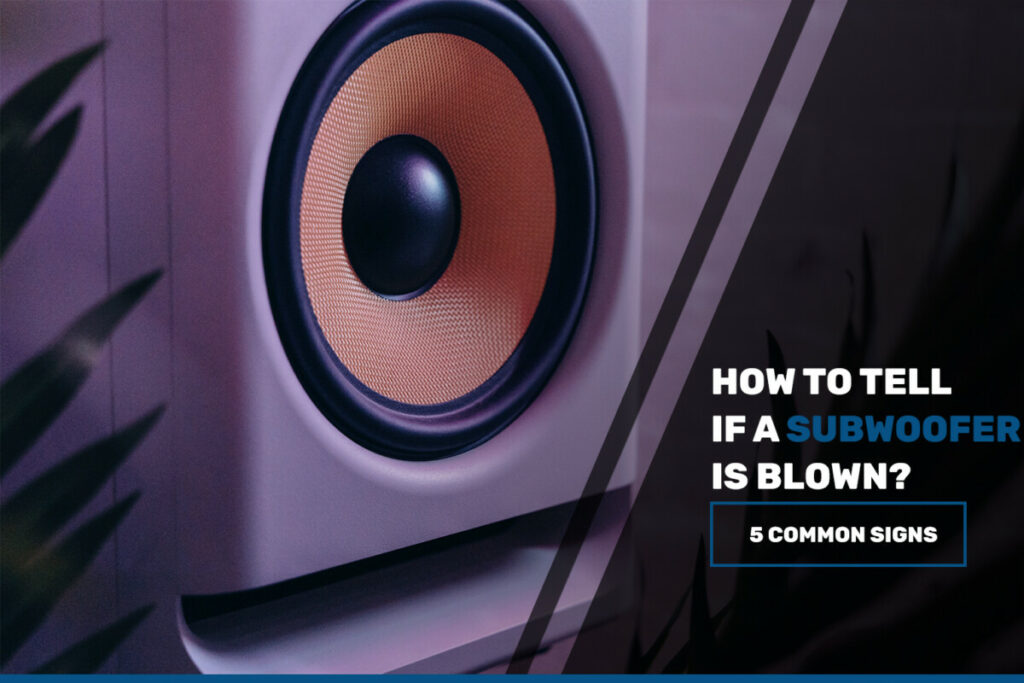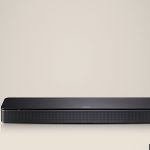
Are you ready to feel the thump in your chest and the ground shaking beneith you? Well, that’s what a good subwoofer should do!
But what happens when that powerful bass suddenly disappear? It might mean that your trusty subwoofer has taken a turn for the worse.
Don’t worry, we’ve got you coverd. In this article, we’ll take you on a journey of discovery, as we uncover the signs of a blown subwoofer and show you how to fix it.
So, sit back, relax and let’s get ready to rumble!
Signs Of Telling That A Subwoofer Is Blown
Just like you can tell when a subwoofer smells burnt, a blown subwoofer can be identified by several signs, including distortion, lack of bass, and a buzzing or humming noise, but still, there are also other things signs that you need to know so that you can tell that your subwoofer is blown.
Those signs include:
Lack Of Bass & Reduced Volume Or Output

The subwoofer is specifically designed to produce low-frequency sounds, such as bass. If you notice a lack of bass or low-frequency sound coming from the subwoofer, it may be blown.
Furthermore, if you notice that the volume or output of the subwoofer has decresed, it may be a sign that the subwoofer is blown.
Popping Or Buzzing
You may hear popping or crackling noises coming from the subwoofer, indicating that the subwoofer is damaged and not functioning properly.
Apart from that, you may also hear a buzzing or humming noise coming from the subwoofer, which can be an indication of a blown subwoofer.
Rattling Or Vibrating & Muffled Sound
If you notice that the subwoofer itself is rattling or vibrating, it may be a sign that the subwoofer is blown. If you know how to measure a subwoofer, then it’ll be easier to notice if a subwoofer is blown or not.
Another thing you might notice from the sound coming from the subwoofer is distortion, meaning that it does not sound as clear and crisp as it should. The sound may also be muffled, meaning that it sounds as though it is coming from behid a wall or barrier.
Damaged Hardware
A blown subwoofer may have a visibly damaged or deformd cone. This can be caused by overdriving the subwoofer, causing the cone to move beyond its intended range of motion.
The voice coil is responsible for driving the subwoofer cone. If the voice coil is visibly damaged or burn, it can no longer function properly and the subwoofer is blown.
Amp Is Not Working Or Working Intermittently
The subwoofer’s amplifier is responsible for providing power to the subwoofer. If the amplifier is not worrking or working intermitently, it can cause the subwoofer to blow.
How To Fix A Blown Subwoofer

After a long talk about the signs that tell a subwoofer is blown, there are a few things you can do in order to help it whether it’s a passive or active subwoofer!
Inspect the wiring: Check all the connections and wires that are connected to the subwoofer, ensure that they are not loose or damaged. If any of them are damaged, replace them with new ones.
Check the fuse: The fuse is a critical component that protects the subwoofer from power surges and shorts. Check the fuse for any signs of damage, such as a blwon filament, and replace it if necesary.
Evaluate the amplifier: The amplifier is responsible for providing the power to the subwoofer, and if it is malfuntioning, it can cause the subwoofer to blow. Make sure the amplifier is working correctly by checking the power output and the volatge level.
Inspect the voice coil: The voice coil is a critical component of the subwoofer that converts electrical energy into mechanical energy. Check the voice coil for any signs of damage or burn marks, and if necessary, replace it with a new one.
Assess the subwoofer cone: The cone is responsible for producing the sound and if it’s damaged or torn, it can cause the subwoofer to blow. Check the cone for any signs of damage and if any is found, replace it with a new one.
Review the enclosure: The enclosure is responsible for providing the subwoofer with the necessary air space to function correctly. If the enclosure is not properly sealed or has any leaks, it can cause the subwoofer to blow.
Check the power: Make sure the subwoofer is getting the correct amount of power, and that the volatge level is not too high. This can be checked by using a multimeter.
Examine the crossover: The crossover is responsible for dividing the audio frequencies that are sent to the subwoofer and the main speakers. Make sure that the crossover is set correctly and not causing the subwoofer to blow.
Verify the impedance: Impedance is the measure of the subwoofer’s electrical resistance and it needs to match the amplifier’s impedance to work correctly. Make sure the impedance of the subwoofer is matched to the amplifier to avoid any issues.
If all the above steps are done and the subwoofer is still not working, it is best to take it to a professional for repairs. They will be able to diagnose and fix any underlying issues that may be causing the subwoofer to blow.
What Can Cause A Subwoofer To Blow?
Another important thing you should know relates to the things that can cause blow in a subwoofer and they are:
- Overheating: Subwoofers can blow if they’re feeling the heat, due to a lack of proper ventilation or poor airflow. This can cause the voice coil to burn out, leading to a blowout.
- Overpowering: Subwoofers can blow if they’re receiving too much power from the amplifier. This can happen when the amplifier is too powerful for the subwoofer or when the crossover settings are set to party mode.
- Overdriving: Subwoofers can also blow if they’re driven beyond their limits. This can happen when the volume is turned up too high or when the subwoofer is used to play music that’s too bass-heavy.
- Short Circuit: Subwoofers can blow if theres a short circuit in the wiring or in the subwoofer itself. This can be caused by damaged or frayed wires, or by a blown fuse, which is a bummer.
- Voice Coil Failure: Subwoofers can blow if the voice coil becomes damaged or fails. This can happen due to overheating, overdriving or a malfunctioning amplifier.
- Mechanical Failure: Subwoofers can blow if there’s a mecanical failure, such as a damaged cone or a torn surround. This can happen due to physical damage or prolonged exposure to extreme temperatures, which can be rough on the subwoofer.
- Incorrect Impedance: Subwoofers can blow if the impedance is not matched to the amplifier. Impedance is the measure of the subwoofers electrical resistance and it needs to match the amplifiers impedance to work correctly, otherwise it’s like trying to use a square peg in a round hole.
- Aging: Subwoofers can blow due to aging, like alll of us. Over time, the components inside the subwoofer can wear out and lose their effectiveness.
- Environmental Factors: Subwoofers can blow due to environmental factors such as humidity, dust, and extreme temperatures.
Final Thoughts
So, a subwoofer can be blown because of different things, but there are always suigns that tell you it is not in the best condition!
Make sure to always check the signs and while checkin them, you will also be able to find the fixes. Have fun!
Sound Artist
I’m a Sound Artist creating immersive sonic experiences. I turn everyday objects into music, turning the mundane into something marvellous!





